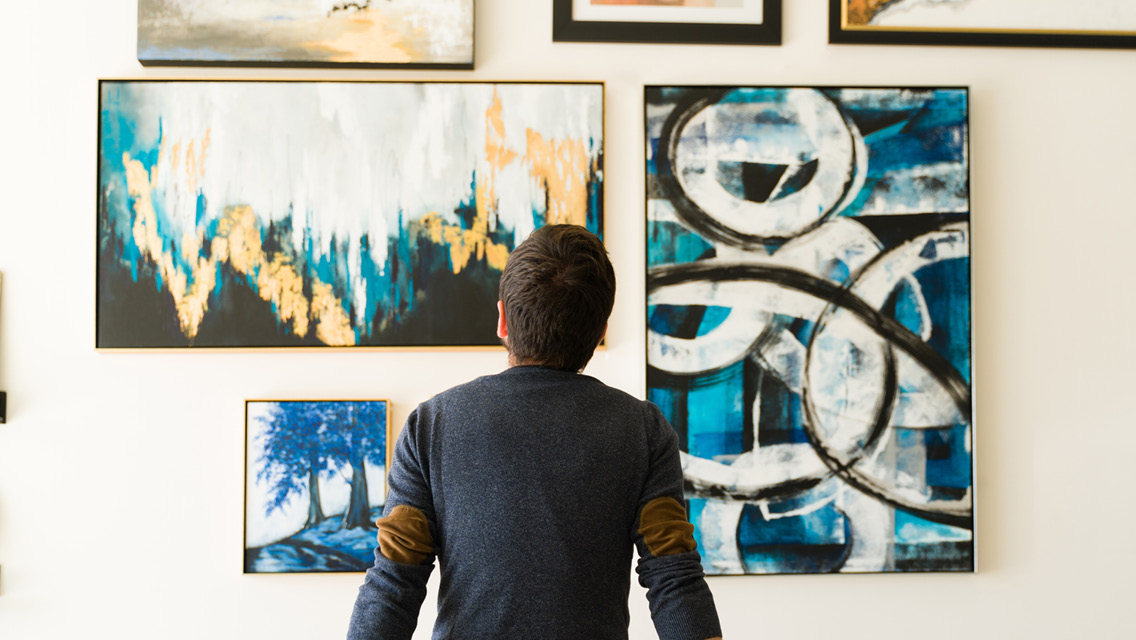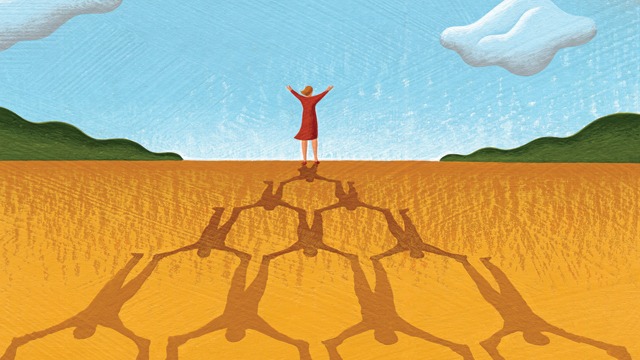In 1996, my wife, Laurie Phillips, was a public artist creating big outdoor projects. But she’d lost touch with the intimate side of art: brush, pen, paper. So, we invented Bad Art Night.
We simply invited some friends to do small-scale art with us around a table. A few attendees self-identified as artists, but most didn’t. “Bad” was there for fun and reassurance: If we deliberately set out to make bad art, skill and quality didn’t matter. The point was process, not product. (Besides, it was a hoot to wreck a piece that was starting to look, you know, too good.)
We got the idea from Life, Paint, and Passion: Reclaiming the Magic of Spontaneous Expression, by Michele Cassou and Stewart Cubley. In their book, they write, “It is the process itself — in the creative energy it releases, in the new perceptions it brings, and in the deepened connection with oneself it fosters — that is at the heart of the desire to paint.”
In the years since, Bad Art Night has assumed many forms. It has inspired people in several cities across the country to set up their own groups. The original is a Zoom gathering these days, and we’re still championing process. Don’t get me wrong — it’s great to aim to make good art, but good or bad, it’s the making that matters.
And experts agree with us: The creative process — whether it involves painting or writing poetry, playing guitar or gardening, cooking or creating collages, woodworking or building wire sculptures — has demonstrable benefits for mind, body, and spirit.
Your Brain on Creativity
Research has found that creative pursuits relieve tension by lowering levels of cortisol, a hormone that helps the body respond to stress. Experiments have shown, too, that art-making activates the reward pathway in the brain, and that, in turn, makes us feel good.
These effects, delightful in themselves, are part of a broader experience of alert absorption that psychologist Mihaly Csikszentmihalyi, PhD, dubbed “flow” in his 1990 book of that title. Flow, he explains, is “being completely involved in an activity for its own sake. The ego falls away. Time flies. Every action, movement, and thought follows inevitably from the previous one. . . . Your whole being is involved, and you’re using your skills to the utmost.” (For more on the mind–body benefits of flow, see “Go With the Flow“.)
Girija Kaimal, EdD, an associate professor in the Drexel University College of Nursing and Health Professions and a leading creativity researcher, suggests that flow offers even more profound rewards. Creative flow, she notes, helps us experience the present moment in a rich way and deal with the future — because when we create, we’re both immersed in process and making decisions about what to do next.
“At first,” she says, “you need to be able to create without fear and judgment. Then, you need to step back and edit.” This dance between letting go and evaluating what you’ve done exercises one of the mind’s most important functions: preparation for what’s coming next, in art or life.
The Art of Connection
But what about those of us who feel we’re not creative? Nonsense, says Christianne Strang, PhD, a board-certified art therapist and assistant professor at the University of Alabama at Birmingham.
“We’ve got cave paintings from 60,000 years ago,” Strang says. “People have always created. It seems an inherent part of being human. But in our society, we can run out of time and space to create, so we decide that we aren’t creative or can’t be.”
Artwork that expresses something of who we are allows us to share that something with others.
The biggest payoff in the creative process is connection, she adds. Artwork that expresses something of who we are allows us to share that something with others.
And creating shoulder to shoulder with your peers is a more meaningful encounter than, say, making small talk at a party. Laurie and I learned so many wonderful wordless things about our friends by sharing the Bad Art Night table with them.
Most of all, when we create, we meet ourselves more deeply. “The process allows us to connect to a piece of ourselves that’s able to play,” says Strang. “As I create, I accept that playful, open, experimental quality as a part of who I am.”
6 Tips to Get Creative
For all its joy and its many benefits, a creative activity can be hard to start. There’s not only the problem of finding the time, but also the questions of where to begin; what to do with your fear that what you make will be pointless, silly, or just plain bad; and, of course, how to keep going. These tips and tricks can help you get beyond the barriers and into the flow.
- Stare at the clouds. Because we are all innately creative, we can spark the process by very simple, even totally passive, means, says creativity researcher Girija Kaimal, EdD. “Remember when we used to just look at clouds in the sky and imagine shapes and faces in them?” she asks. “Start there. Wander out in nature and say what you see in the light and shadows. What do different colors represent to you and remind you of?”
- Do five minutes. There’s a 12-step program for nearly every problem, and the one for blocked creative people is called ARTS Anonymous. The organization’s prime tool is “5 Alive”: a commitment to practice some form of creativity for at least five minutes every day. Even staring at the canvas or the blank paper or the woodworking project counts, and you are allowed to stop after five minutes. But often, that’s enough to get you going, and you might go for 20 minutes — or two hours.
- Make something consciously bad. That’s the delightful practice enshrined in Laurie Phillips’s and my Bad Art Nights. A big, ugly, clunky human figure! A nasty scribble! A clay bird that looks like a potato with a beak! For total defiance of the inner critic, take a reasonably “nice” thing you’ve created and ruin it. This kind of rule-breaking fun can take the pressure off the creative process. (Learn more about the Bad Art Night movement at www.badartnight.com.)
- Meditate. Bay Area–based author and meditation teacher Hugh Delehanty offers guided-meditation workshops aimed at freeing up creativity. Meditation is about silencing the chatter in your head and, as he puts it, “becoming really intentional about listening to that thing inside of you that wants to create something original and genuine.” Ten minutes (or more) of silent meditation before you begin can clear the mental slate just enough to get you started. (For 10 simple tips for making meditation a part of your life, see “How to Begin a Daily Meditation Practice“.)
- Do morning pages. Julia Cameron popularized this practice in her 1992 bestseller The Artist’s Way: A Spiritual Path to Higher Creativity. Fill three notebook pages daily with gripes, fears, worries — all the mental noise that stands between you and the flow state. Morning pages, she writes, can help you get beyond such mental blocks.
- Get support. You don’t have to create alone — and the shared energy of a group setting may help you find your flow state. Team up with a friend to work on creative projects for half an hour, or join a group that meets regularly to create together. Whether you invite comment on the works in progress is entirely up to you and your friends — but remember that the point is mutual support, not critique.
This article originally appeared as “Artistic Pursuits” in the March 2022 issue of Experience Life.





This Post Has One Comment
Very good article. I plan on trying some of the ideas.